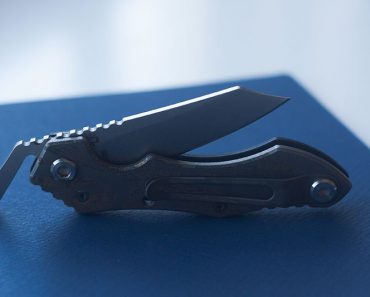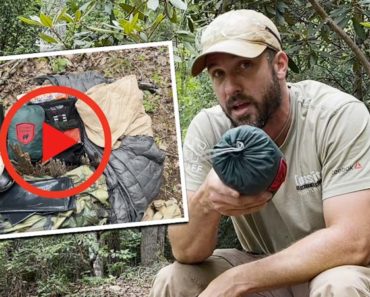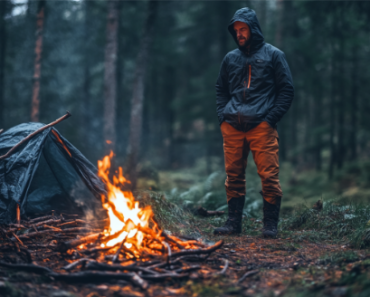As the years go by, we hear more about the dangers of eating the food sold at the store. Many products are pushed close to or past their expiration date, there is always a risk of food poisoning, and a potential pest infestation at the grocery store could cause additional issues with the food that we consume. That is why it is so important to add hunting, gathering, and preparedness skills to your list of survival skills. If things continue to go south, you need to know you can find the food that you and your family will need to stay strong and healthy.
Of course, there is more to living off of the land than just shooting a deer here and there. Instead, you need to plan accordingly, learn how you can maximize every kill that you make, and know how to make the most out of your equipment and your time. If you would like to learn more about how to effectively hunt and gather, then follow this guide.
Use The Best Weapons
When it comes to living off of the land, preparation is key, and it starts with understanding how to use the best weapon for the job. To hunt many larger animals, you will need a firearm of some sort. While some guns may feel like they are “one use fits all,” some weapons are better suited for specific types of hunting.
For instance, a rifle is the best for hunting deer because it allows you to shoot a long distance. A shotgun is often the best weapon of choice for bird hunting because it shoots multiple BBs, which gives you a better chance of hitting the target. If you plan to hunt smaller vermin, like rabbits or groundhogs, then go with a .22 LR. Make sure that you purchase the proper gauge and caliber projectile. If you need help, ask an expert at the store.
Since purchasing and maintaining firearms can sometimes be a costly endeavor, it is also a good idea to have at least one good bow and a lot of high-quality arrows. Typically a bow is a much cheaper alternative, and it is easier to transport, especially if you are going to be out in the wilderness for long periods of time. A bow will also be very effective for hunting many animals, including white-tailed deer, mule deer, elk, and caribou.
Understand Animal Behavior
Having a weapon is a good first step. Next, you need to learn about animal behaviors and the best time to hunt a particular prey so you can be productive out there in the field and not waste time. Remember, when you are limited on resources, a single missed shot could mean that you or your family could go hungry that day.
As an example, depending on where you live, you may be hunting a lot of deer, so you need to understand their behavior. Deer have an incredible sense of smell from long distances, so you will want to cover your scent and stay downwind.
Every animal has its own strengths and characteristics. When it comes to rabbits, they like to zig-zag around when they are scared, so you can make a noise in one part of the brush, and the rabbit may head right in your direction. If your main target is pheasants, then you should know that they are creatures of habit and they likely visit the same spots every day, so you can study their habits and then go where they will be when the time is right. Of course, having a dog is always much easier when you’re hunting birds like pheasants.
How To Build a Small Bunker in Your Backyard with $400
Taking Care Of Your Dog
If you do have a dog, then you will want to consider their health along the way as well. If you live off of the grid, then you will need to make some changes to ensure their safety. That may involve using solar panels to keep them warm all year long. You can even add solar panels on their dog house or living space. While you may use your dog as a hunting companion, you will still want to protect your pup from predators, which you can do by keeping a fenced-in yard and by being extra vigilant when you know that coyotes and other animals may be around.
A dog can help you to hunt as well. Since dogs are so good at tracking, you can take a lot of the guesswork out of the process and spend more time hunting. They can also sniff tracks and lead you right to your target. Best of all, they are great companions that will keep you company during long hunting trips.
However, it is important to keep in mind that dogs cannot eat everything that they hunt. There are many proteins that can cause them discomfort, pain, or worse, and they include liver, raw meat and fish, fat trimmings, and cooked bones. They also should not consume salt, almonds, and yeast, among other items. When you are living off of the land, you may want to bulk up on canned dog food. Remember that canned food can also go bad over time, so just be cautious to keep your dog safe during feeding time.
Make The Most Out Of What You Kill
When you are living off of the grid, then every hunt and every kill needs to be completed to perfection. It is important that you only spend your valuable time and ammunition on animals that you intend to eat. The issue is that many hunters fail to consume all of the edible parts of an animal. For example, head meat, the stomach, intestines, and an animal’s tongue can still be consumed. Some hunters only use about a third of the edible portions from an animal, but you may not be able to afford to let things go to waste.
If you look at other cultures around the world, you will find that when they kill an animal, literally nothing goes to waste, and even the parts that may seem disposable can be cooked into other dishes. Take some time to research online or at the local library to find out how you can avoid waste.
It is also wise to understand how much food you will likely consume and how much you will need for any given time, so you aren’t hunting animals that you don’t need. For instance, if you hunt moose, then you will find that a large specimen provides almost 400 pounds of meat, good for at least 50 days of eating. Even if you hunt small animals like beavers, you could get about 30 pounds of meat each. By hunting enough of them, you can last months. Needless to say, research is important, so you can preserve your time and energy.
Properly Identify Your Food
There will be times when you will be eating plants and berries instead of meat, but before you put anything in your mouth, you need to ensure that you are not consuming something poisonous. Again, research is essential. At a minimum, bring a guidebook with you at all times so you can identify what you see before eating.
In many cases, a plant can have healthy berries, but there may also be another plant that looks just like it that has dangerous berries. When in doubt, keep looking for the next opportunity. Keep in mind that you likely won’t die just by taking one small bite out of a poisonous berry, but if you try one and it tastes bitter, then it is better to just move along.
When you are picking berries and fruit, keep the health of the plant and the environment in mind and only take what you need for now. Also, try to avoid foraging where chemicals may have been introduced, like by the side of the road. Take a look, and see if you spot a lot of insect life in the area, for that is a clue that there isn’t a lot of chemical activity, and it may be safe.
Decide Where You Will Live
If you are just deciding to live off of the land and you are not tied down to where you currently live, then this may be a good time to think about moving to a different state that may have more natural resources. For example, Maine has a low population density and a lot of open space so you can keep to yourself. There are also a lot of natural resources like water and timber to use for your daily living. States like Montana and Arizona are also known for their abundance of animals that can keep your family well-fed all year round. Do some research and find the best place for your situation.
As you can see, there is a lot to consider when you decide to live off of the grid, but once you get it all down and into a routine, it will become much easier. Consider these tips, and you can survive your new life for many years to come.



























